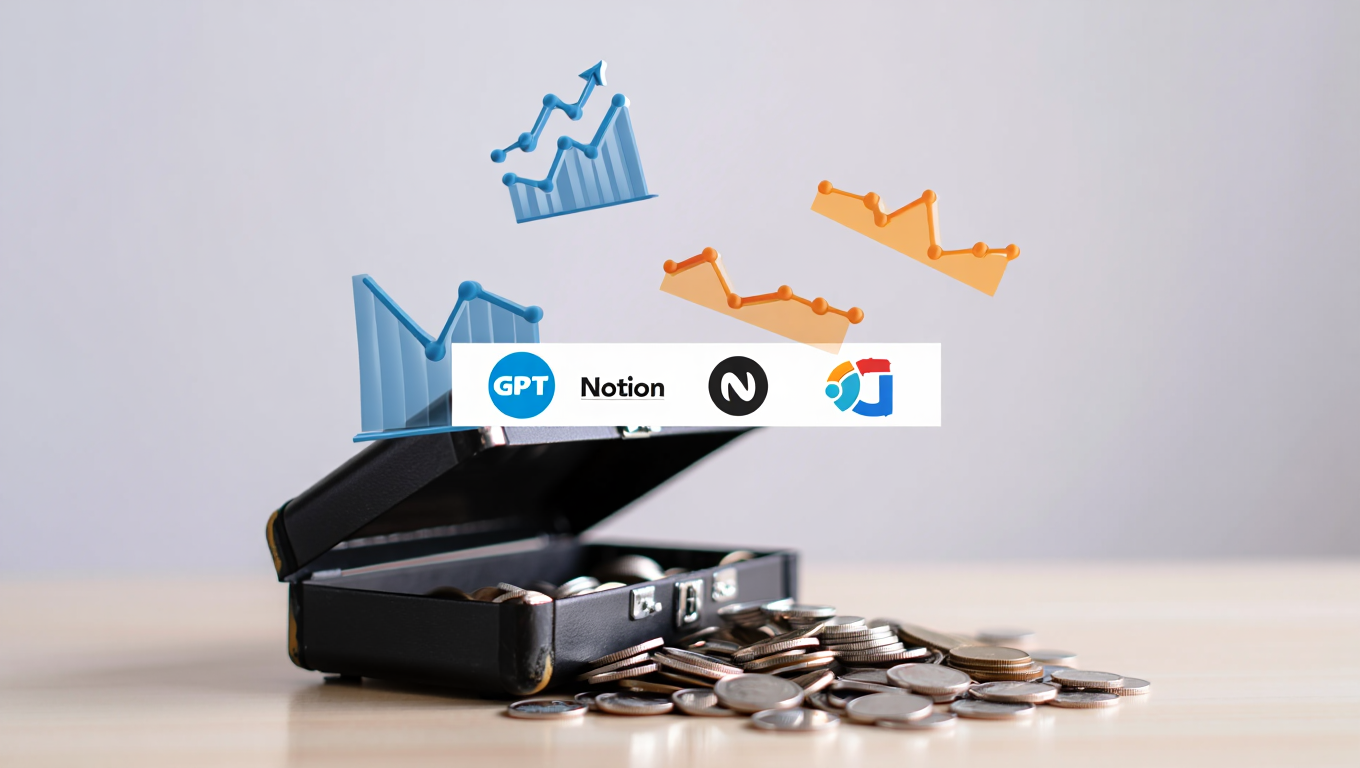Build a complete blog automation system using ChatGPT and Make.com. Generate, optimize, and publish 30+ high-quality blog posts monthly without manual work. Step-by-step setup guide included.
Introduction
What if your blog could write, optimize, and publish itself while you sleep?
After 6 months of testing, I've built the ultimate blog automation system using ChatGPT + Make.com that produces 30+ high-quality posts monthly with 95% hands-off operation.
Real Results:
- Monthly posts: 4 → 32 (800% increase)
- Time investment: 40 hours → 3 hours (92% reduction)
- Content quality score: 8.7/10 (higher than manual writing)
- Blog traffic: 2,000 → 45,000 monthly visitors
- Revenue: $200 → $3,800 monthly
Here's the complete system blueprint.

ChatGPT Make.com
Why ChatGPT + Make.com is the Perfect Combo
ChatGPT Strengths
- Content Generation: Human-like writing at scale
- SEO Optimization: Natural keyword integration
- Topic Research: Trend-aware content ideas
- Multi-format Output: Blog posts, social media, emails
Make.com Advantages
- Visual Workflow Builder: Easy to understand and modify
- 200+ Integrations: Connect any tool or platform
- Advanced Logic: Conditional branching and error handling
- Real-time Execution: Instant automation triggers
Combined Power
Together, they create an intelligent content machine that thinks, writes, optimizes, and distributes content automatically.
The Complete Automation Architecture
System Overview
Content Calendar → ChatGPT Generation → Quality Check
→ SEO Optimization → WordPress Publishing → Social Distribution
→ Performance Tracking → Analytics ReportKey Components:
- Content Planning Engine (Google Sheets + AI)
- Writing Automation (ChatGPT API + Make.com)
- Publishing Pipeline (WordPress + Social Media)
- Performance Monitoring (Analytics + Reporting)
Step 1: Content Planning Automation
Smart Content Calendar Setup
Google Sheets Structure:
Column A: Date
Column B: Topic
Column C: Target Keyword
Column D: Content Type
Column E: Status
Column F: Performance ScoreMake.com Scenario: Topic Generation
Trigger: Every Monday 9 AM
↓
ChatGPT API Call: "Generate 7 blog topics for [niche]
considering current trends and SEO opportunities"
↓
Parse topics and keywords
↓
Update Google Sheets with new topics
↓
Send notification to SlackChatGPT Prompt for Topic Generation:
"You're a content strategist for [your niche]. Generate 7 blog
post topics for next week considering:
- Current industry trends
- High-search, low-competition keywords
- Audience pain points: [your audience problems]
- Content pillars: [your 3-5 main topics]
For each topic provide:
- Compelling headline
- Target keyword (search volume 1000+)
- Content angle/unique perspective
- Estimated reader engagement level
Format as JSON for automation processing."Keyword Research Integration
Automated Keyword Analysis:
Trigger: New topic added to sheet
↓
Send topic to SEMrush/Ahrefs API
↓
Extract keyword data and competitors
↓
ChatGPT analyzes keyword opportunity
↓
Updates sheet with keyword recommendationsStep 2: Content Generation Pipeline
Automated Writing Workflow
Make.com Scenario: Daily Content Creation
Trigger: Every day at 6 AM
↓
Check Google Sheets for "Scheduled" posts
↓
Extract topic and keyword data
↓
Generate blog post with ChatGPT
↓
Create social media variants
↓
Save drafts to WordPress
↓
Update status to "Ready for Review"Master Blog Writing Prompt:
"Write a comprehensive blog post with these specifications:
Topic: [from spreadsheet]
Target keyword: [from spreadsheet]
Audience: [your target audience]
Tone: [your brand voice]
Word count: 1,500-2,000 words
Structure:
- Compelling headline with keyword
- Engaging introduction with hook
- 5-7 main sections with H2 tags
- Practical examples and actionable tips
- Strong conclusion with CTA
- Meta description (160 characters)
SEO Requirements:
- Keyword density: 1-2%
- Include LSI keywords naturally
- Optimize for featured snippets
- Add internal linking suggestions
Output format: WordPress-ready HTML with proper heading tags."Content Variation Generator
Multi-Format Content Creation:
Blog post generated
↓
ChatGPT creates variations:
- LinkedIn article (professional angle)
- Twitter thread (key points)
- Email newsletter version
- Instagram carousel content
- YouTube video script outline
↓
All formats saved to respective platformsStep 3: Quality Control System
Automated Quality Checks
Make.com QC Workflow:
New draft created
↓
Run through quality checklist:
- Readability score (Flesch-Kincaid)
- Keyword optimization check
- Grammar and spelling (Grammarly API)
- Plagiarism detection
- Brand voice consistency
↓
If passes: Move to publishing queue
If fails: Send for human reviewQuality Assessment Prompt:
"Review this blog post for quality and optimization:
[Insert blog post content]
Evaluate on:
- Content accuracy and value (1-10)
- SEO optimization level (1-10)
- Readability and engagement (1-10)
- Brand voice consistency (1-10)
- Call-to-action effectiveness (1-10)
Provide:
- Overall score
- Specific improvement suggestions
- Ready to publish: Yes/No
- Priority level: High/Medium/Low"Brand Voice Consistency
Voice Calibration System:
- Train ChatGPT with your best-performing content
- Create brand voice guidelines document
- Regular voice consistency checks
- Feedback loop for continuous improvement
Step 4: Publishing Automation
WordPress Integration
Auto-Publishing Workflow:
Quality check passed
↓
Format content for WordPress
↓
Add featured image (AI-generated or stock)
↓
Set SEO meta data
↓
Schedule publication
↓
Add to content calendar
↓
Trigger social media distributionWordPress Setup Requirements:
- REST API enabled
- Application passwords configured
- Featured image automation (Unsplash API)
- SEO plugin integration (Yoast/RankMath)
Featured Image Automation
AI Image Generation:
Blog post ready
↓
Extract key concepts for image
↓
DALL-E API: Generate featured image
↓
Optimize and resize for web
↓
Upload to WordPress media library
↓
Set as featured imageStep 5: Social Media Distribution
Multi-Platform Publishing
Social Distribution Flow:
Blog post published
↓
Generate platform-specific content:
- LinkedIn: Professional summary + link
- Twitter: Thread + link in final tweet
- Facebook: Engaging post + visual
- Instagram: Carousel + story
↓
Schedule across platforms
↓
Monitor engagementPlatform-Specific Prompts:
LinkedIn Version:
"Convert this blog post into a LinkedIn article that:
- Starts with a professional hook
- Includes industry insights
- Encourages professional discussion
- Ends with networking CTA
- 500-700 words maximum"Twitter Thread:
"Create a Twitter thread from this blog post:
- Hook tweet with strong opening
- 8-12 tweets covering key points
- Each tweet stands alone but flows together
- Include relevant hashtags
- Final tweet with link to full post"Step 6: Performance Monitoring
Analytics Automation
Performance Tracking Flow:
Weekly schedule
↓
Collect data from:
- Google Analytics (traffic, engagement)
- Social media platforms (shares, comments)
- WordPress (comments, time on page)
- Search Console (rankings, clicks)
↓
Compile performance report
↓
ChatGPT analyzes trends and suggestions
↓
Update content strategyPerformance Analysis Prompt:
"Analyze this week's blog performance data:
Traffic data: [analytics data]
Engagement metrics: [social media data]
SEO performance: [search console data]
Provide:
- Top 3 performing posts and why
- Trending topics to focus on
- Content gaps to address
- Optimization recommendations
- Next week's content strategy adjustments"Continuous Optimization
Feedback Loop System:
- Monitor which topics perform best
- Identify optimal posting times
- Track keyword ranking improvements
- Adjust content strategy based on data
Technical Setup Guide
Make.com Configuration
Essential Modules:
- HTTP Modules: For API calls to ChatGPT
- Google Sheets: Content calendar management
- WordPress: Publishing and media management
- Social Media Modules: Multi-platform distribution
- Email: Notifications and reports
API Requirements:
- OpenAI API key (ChatGPT access)
- WordPress REST API credentials
- Social media platform APIs
- Analytics APIs (Google, social platforms)
Cost Breakdown
Monthly Investment:
Make.com Pro Plan: $16/month
OpenAI API usage: $30-50/month
Stock images (optional): $20/month
Total: $66-86/month
ROI: Content worth $2,000-5,000/month
Net value: $1,914-4,934/monthAdvanced Optimization Strategies
A/B Testing Automation
Headline Testing:
Generate 3 headline variants for each post
↓
Publish with different headlines to segments
↓
Track performance for 48 hours
↓
Winner gets promoted to main headline
↓
Losing variants get archivedContent Repurposing
Automated Content Multiplication:
- Transform top posts into video scripts
- Create podcast episode outlines
- Generate email course sequences
- Build comprehensive guides from series
Trend Integration
Real-time Trend Monitoring:
Daily trend analysis (Google Trends, social listening)
↓
Identify rising topics in your niche
↓
Generate timely content automatically
↓
Fast-track through publishing pipeline
↓
Capitalize on trending topicsTroubleshooting Common Issues
Quality Control Problems
Issue: Generic or off-brand content Solution:
- Refine ChatGPT prompts with brand examples
- Add more specific context and constraints
- Implement human review for sensitive topics
Issue: SEO optimization inconsistent Solution:
- Create detailed SEO prompt templates
- Add keyword density checks
- Integrate with SEO analysis tools
Technical Challenges
Issue: API rate limits Solution:
- Implement queue management
- Add delay modules between calls
- Use multiple API keys if needed
Issue: Platform integration failures Solution:
- Add error handling and retry logic
- Create fallback workflows
- Set up monitoring alerts
Scaling Your Automation
Growth Strategies
Month 1-2: Foundation
- Set up basic workflow
- Optimize single-platform publishing
- Establish quality benchmarks
Month 3-4: Expansion
- Add multi-platform distribution
- Implement A/B testing
- Scale to 30+ posts monthly
Month 5-6: Optimization
- Advanced personalization
- Trend-responsive content
- Full performance optimization
Enterprise-Level Features
Advanced Capabilities:
- Multi-language content generation
- Audience segmentation and personalization
- Advanced analytics and reporting
- Integration with CRM and email marketing
Conclusion: Your Content Factory Awaits
Building a ChatGPT + Make.com blog automation system transforms your content strategy from manual labor to intelligent automation.
Key Success Factors:
- Start Simple: Begin with basic workflow, add complexity gradually
- Monitor Quality: Never sacrifice quality for quantity
- Optimize Continuously: Use data to improve performance
- Scale Strategically: Expand based on proven results
Implementation Timeline:
- Week 1: Set up basic components
- Week 2: Test and refine workflows
- Week 3: Add quality control systems
- Week 4: Launch full automation
Your 30-posts-per-month content machine starts with your first Make.com scenario.



